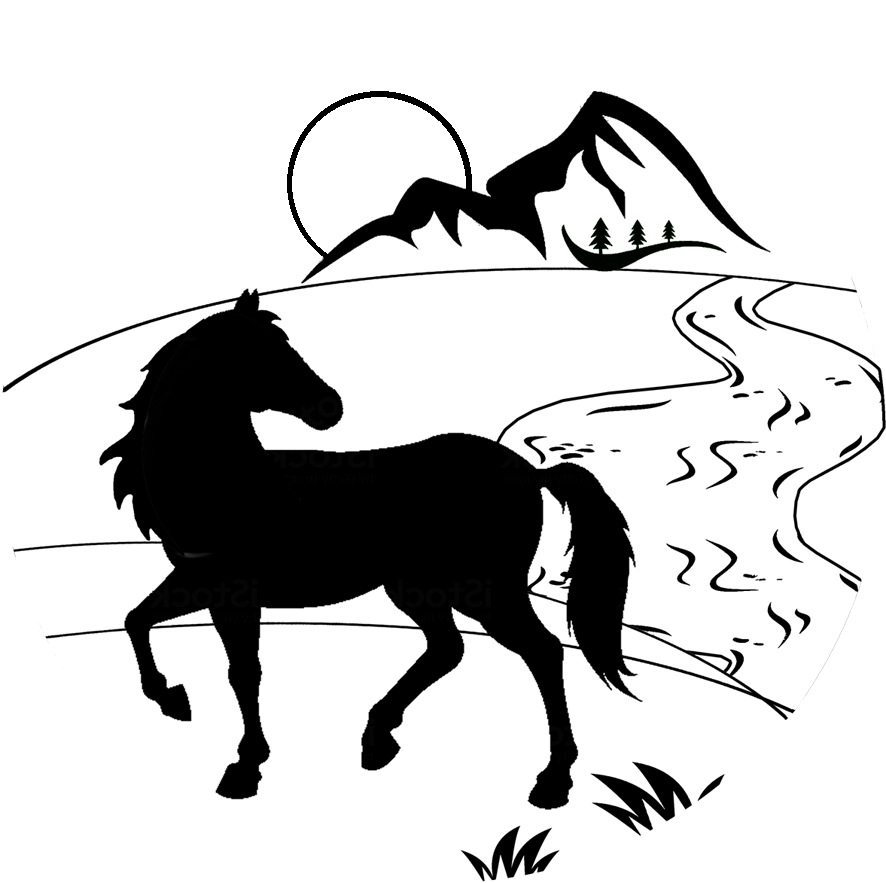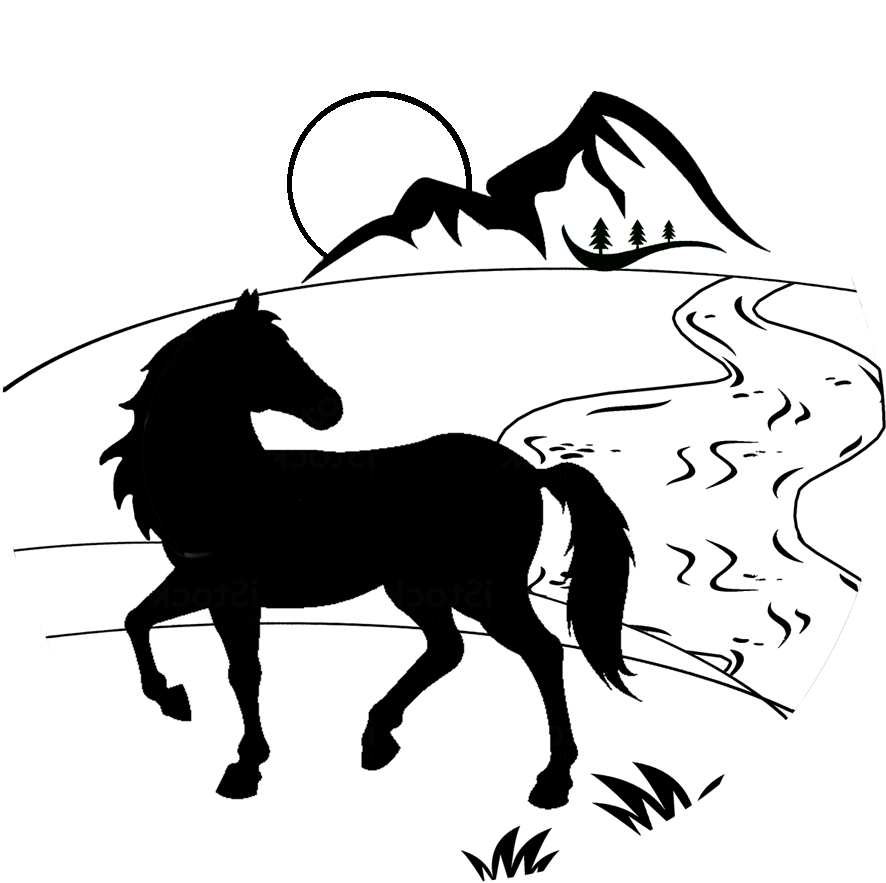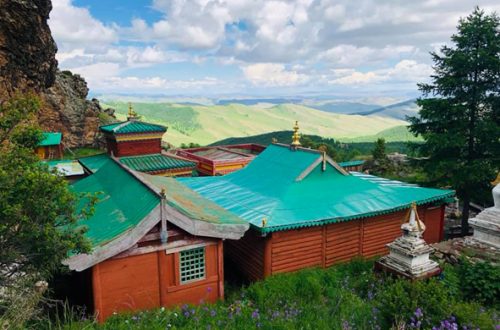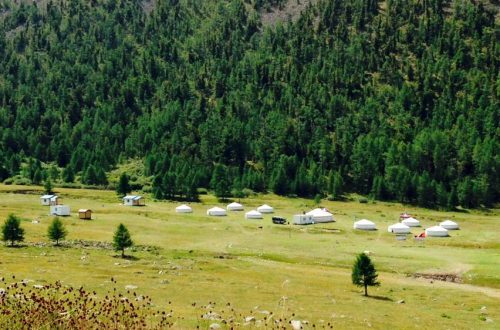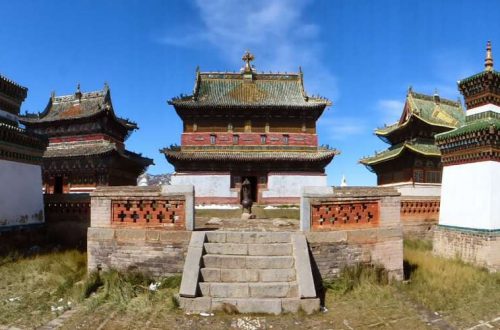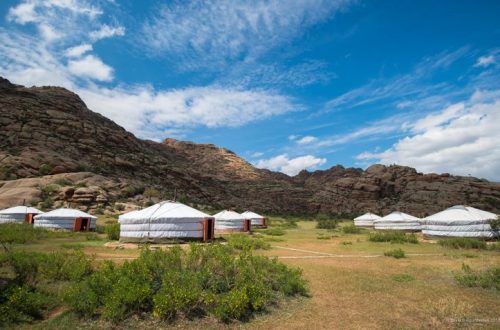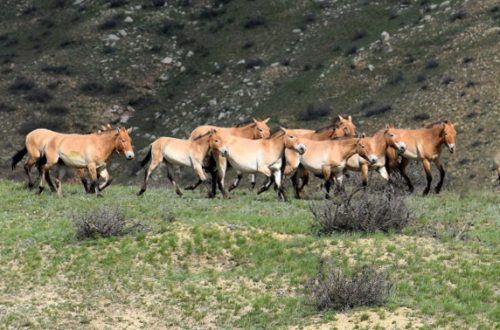TUVKHUN MONASTERY
One of Mongolian’s oldest Buddhist monastery is located on the border of Uvurkhangai province and Arkhangai province in central Mongolia, approximately 47km southwest of Kharkhorin.The monastery was first established in 1648by the 14years old Zanabazar, the first Jebzundamba Khutugtu and spiritual head of Tibetan Buddhism for the Khalkh in Qater Mongolia. He determined that the location on the Shireet Ulaan uul mountain overlooking a hill at 2600m above sea level was an auspicious location. The first physical structures were built upon his return from studying in Tibet in 1653.Zanabazar who was a gifted sculpture, painter and musician, used the monastery, originally called Baysgalant Aglag oron (happy secluded place ),as his personal retreat over the course of 30years.The monastery was destroyed in 1688 by Oirat Mongols during their military campaign against Eastern Khalkh Mongols.
NAIMAN NUUR NATIONAL PARK
/Eight lakes/ The park is located in the province of Uvurkhangai, in the Khangai range, and it has the typical landscapes of the Mongolian high mountains with their large forest of larches. The area of Naiman Nuur, ”eight lakes ”formed behind the volcanic eruptions that occurred all along the centuries. The park is 2400m above sea level. An area of 11500hectars has been protected as a National park since 1992.
KARAKORUM
Karakorum which was the capital of the Mongol empire between 1235 and 1260 and of the Northern Yuan in the 14-15thcentures. Its ruins lie in the northwestern corner of the Uvurkhangai province of Mongolia, near today is town of Kharkhorin and adjacent to the Erdene Zuu monastery. They are part of the upper part of the World heritage site Orkhon valley. In 1218-1219,Chingghis khan rallied his troops for the campaign against the Khwarezm empire in a place called Karakorum ,but the actual foundation of a city is usually said to have occurred only in 1220.Until 1235 Karakorum seems to have been little more than a ger town after the defeat of the Jin empire, Chigghis Khan’s second son Ugudei who built a fixed palace and erect the walls around the place.
KHUGNU KHAN UUL NATURE RESERVE
The Khugnu khan mountain is boulder strewn rocky mountain that rises up from the semi desert . It is 1962m above sea level in the Gurvanbulag soum of Bulgan province. The forest steppe zone is characterized by its presence. 200 km away from Khangai Khentii forest, shrubs such as larch, birch and other rare shrubs tarantula grow as well.
KHUSTAI NATIONAL PARK
The Mongolian government declared Khustai national park as a over specially protected area in 1993,one year the initiation of the reintroduction project of the takhi to the Khustai nuruu. The park covers 50600hectars land which is home to 459 species of vascular plants ,85 species of lichens,90 species of moss,44 species of mammals have been recorded, including roe deer, Mongolian gazelle, wild boar, wild sheep, ibex, grey wolves, pallas cat, Eurasian lynx. The 217species of birds include golden eagle, great bustard, whooper swan, black stork, little owl. In 2002, the man and the biosphere reserves organization of UNESCO certified the khustai national park as a member of the world biosphere network of natural reserves.
